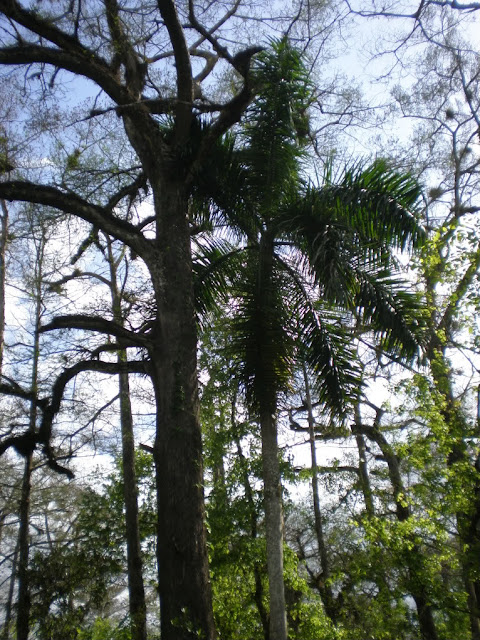So, that in mind, let's head to the Florida that exists beyond the tourist hot spots and postcard perfect beaches. Why? Because when I was browsing some nature books last night, time and again, I came across a refusal to document anything from southern Florida (and Mexico) because it feels too much like a copy of the Caribbean islands. If you ask me, I think they were just afraid of the production costs of adding in a bunch of more pages to make their guides exhaustive, but here we are. Southern Florida is a very unique place on this globe, deserving of far more recognition than to be dismissed as "part of something else". True, it does have some botanical and animal species that are also found in Cuba, the Bahamas, and southwards, and it also has some species that extend their range slightly into the tropical realm from as far north as Quebec, like the Red Maple (Acer Rubrum). Raccoons (Procyon Lotor) live alongside American Flamingos (Phoenicopterus Ruber). More unique and becoming increasingly rare is this scene below:
 |
| http://forums.gardenweb.com/forums/load/palms/msg0319222516174.html?28 |
The parts that are not wild, well, they are packed so full of exotics and invasives from the tropics around the world that one would be hard pressed to find something genuinely southern Florida. This happens to be the case because it is the one place in the United States where tropicals can safely be grown, and in the fine American tradition of planting one's property with perceived beauty over native species, there are manicured lawns everywhere along the suburban streets of Miami and Fort Lauderdale that boast just about every kind of flowering tree and palm you can imagine. I would know, because when I was growing up, it was the first place and time where I realized that many of the trees around me were not there when things were wild and untamed. I was six years old and had just taken an interest in both reading in English and noticing that the trees in our Fort Lauderdale backyard were very different from the trees in our Milton, Ontario backyard. Of course, at that time, even while I wondered what "forest Florida" looked like as opposed to city Florida, I also delighted in the sheer beauty of all the tropical flowers, trees, and even lizards around me, native or not. I did not care that everything was here artificially and introduced, and especially did not mind that we were even in the actual tropics.
That's right! Southern Florida does indeed have a tropical climate, but even Key West lies 40 miles north of the Tropic of Cancer. This is because the land is surrounded by water, and very warm water at that. This is the birthplace of the Gulf Stream, which also (usually) makes Europe's winters much warmer despite being as far north as much of Canada. Artificial climates and plants aside though, nothing can really take away from how exotic this land is, both its manicured Miami environs and its primordial but vanishing Everglades wilderness. The contrast is very noticeable:
Much of the densely, yet comfortably, packed urban areas are built on the only true solid ground in the land, a ridge of limestone which rises only 10 feet or so above the surrounding ocean and everglades, with 24 feet marking the highest point in Coconut Grove, a Miami neighborhood which has retained much of its hammock character of dense mahogany and Gumbo Limbo groves towered over by pines, palms, and the odd high-ground Bald Cypress. Still, Coconut Grove is but a remnant, and a very incomplete remnant, of what the Miami rocklands once looked like, which was mostly dominated by southern pines. Development aside, the absence of regular fires in the landscape has altered what remains of the vanished pine rocklands even more. Below is a sample video of some of what remains of this ecosystem and the role of fire in maintaining it, presented by Everglades National Park, which gives you a pretty good idea of what Miami looked like before it was Miami:
This is also a good video for illustrating the role of fires even in a wet and humid place like this.
Outside of the developed areas are vast open prairie-like stretches of sawgrass interspersed with other hammocks; in essence, a very wide, very slow river that drains much of what is green on the map there. Much more can be said about this unique extra-tropical tropical land, but hopefully this post has served as a nice introduction to one of the extremities of the continent, which we will be revisiting a lot in the future.


No comments:
Post a Comment